https://hackaday.com/2019/03/28/eavesdropping-on-cosmonauts-with-an-sdr/Usually when we hear about someone making contact with astronauts in orbit, it’s an intentional contact between a ham on the ground and one of the licensed radio amateurs on the ISS. We don’t often see someone lucky enough to snag a conversation between ground controllers and a spacecraft en route to the ISS like this.
For [Tysonpower], this was all about being in the right place at the right time, as well as having the right equipment and the know-how to use it properly. Soyuz MS-12 launched from Baikonur on March 14 with cosmonaut [Aleksey Ovchinin] and NASA astronauts [Nick Hague] and [Kristina Koch] onboard, destined for the ISS after a six-hour flight. The lucky bit came when [Tysonpower] realized that the rendezvous would happen when the ISS was in a good position relative to his home in Cologne, which prompted him to set up his gear for a listening session. His AirSpy Mini SDR was connected to a home-brew quadrifilar helical (QFH) “eggbeater” antenna on his roof. What’s nice about this antenna is that it’s fixed rather than tracking, making it easy to get on the air with quickly. After digging around the aviation bands at about 121 MHz for a bit, [Tysonpower] managed to capture a few seconds of a conversation between [Ovchinin] and Moscow Flight Control Center. The commander reported his position and speed relative to the ISS a few minutes before docking. The conversation starts at about 1:12 in the video below.
We think it’s just cool that you can listen in on the conversations going on upstairs with a total of less than $50 worth of gear. Actually talking to the hams aboard the ISS is another matter, but not a lot more involved really.
Install the app
How to install the app on iOS
Follow along with the video below to see how to install our site as a web app on your home screen.
Note: This feature may not be available in some browsers.
You are using an out of date browser. It may not display this or other websites correctly.
You should upgrade or use an alternative browser.
You should upgrade or use an alternative browser.
APRS ..yms. radioamatööritoimintaa
- Viestiketjun aloittaja KorpiSISSI
- Aloitus PVM
https://www.theregister.co.uk/2019/04/05/amateur_radio_spectrum/Some people have been using ham radio frequencies for communication that's encrypted or difficult to decipher and others argue that's a threat to national security and a violation of the spirit and rules of amateur radio. Really, it's a fight over whether the amateur radio spectrum remains a hobbyist space or develops as a medium for data traffic.
In a letter [PDF] submitted earlier this week to the US Federal Communications Commission, NYU professor Theodore Rappaport, who runs the NYU Wireless research center at the NYU Tandon School of Engineering, voiced support for RM-11831 [PDF], a proposed radio rule revision that, among other things, would require radio transmissions be open to public scrutiny.
"RM-11831 allows ACDS [Automatically Controlled Digital Stations] to continue to operate in ham radio, but simply requires them to use openly decodable transmissions in compliance with FCC rules," Rappaport says.
That means difficult-to-decipher, proprietary automatic repeat query (ARQ) traffic, using radio signal modulation modes like Pactor 3, WINMOR, STANAG, and ARDOP would have to be open source or make easy decoding available to ham radio operators who wish to examine the traffic.
Federal rules ban amateur radio stations from transmitting "messages encoded for the purpose of obscuring their meaning," with some exceptions. Despite this, evolving technology has given rise to a number of services that, some argue, violate these rules, such as Winlink and D-Star.
If the rule change is adopted, it might mean the end of these services, or reduced functionality, and might make it harder for innovative services like New Packet Radio to emerge.
RM-1183, argues Rappaport, "assures national security by providing transparency and self-monitoring by the public of all amateur radio transmissions in the HF spectrum that routinely cross international borders."
At the same time, Rappaport urges the FCC to reject other proposed rules, NPRM 16-239, RM-11828, RM-11759, and RM-11708, that he claims would allow more obscure or effectively encrypted communications over public radio spectrum.
Others offering their opinions to the FCC disagree. "RM-11831 is yet another effort by a small circle of US amateur radio operators wanting to cripple the use of data modes on the amateur radio bands," writes Stephen Williams of Bakersville, North Carolina, in a comment submitted to the agency.
"If enacted, the changes proposed will NOT promote transparency and will NOT prevent the use of the bands by commercial interests. There are no proven cases of commercial use of modes like Pactor on the amateur bands. This RM-11831 effort is simply an attempt to kill the use of Pactor in the US as a communications mode supporting emergency communications operations."
In a letter [PDF] to FCC chairman Ajit Pai last December, Loring Kutchins, president of the Amateur Radio Safety Foundation (ARSL), which oversees Winlink, pushed back against Rappaport's characterization of the service.
"Theodore Rappaport and the opponents he informs offer an emotional, layman's conjecture in their assertions that hard-to-monitor, advanced digital protocols used in the amateur radio service will encourage crime, terrorism, and are a threat to national security," said Kutchins. "They clearly do not know or appreciate what monitoring and inspection routinely occurs, and are thus not qualified to judge."
Kutchins claims Winlink sysops inspect system traffic. "All communications are logged in detail and messages are archived, and available to the FCC and anyone else on request," he insists, pointing to a separate set of comments intended to rebut Rappaport's claims.
Dan White, of Granbury, Texas, is both an ARSL member and critic. He claims the organization is backing proposed rules like RM-11708 "to provide free encrypted email and bypass commercial maritime services under the guise of 'emergency communications' while exhibiting total disregard for incumbent spectrum users."
The FCC will consider input on RM-11831 until April 29 this year. ®

https://spectrum.ieee.org/tech-talk...water-to-achieve-multiple-beamsteering-statesA new antenna that uses saltwater and plastic instead of metal to shape radio signals could make it easier to build networks that use VHF and UHF signals.
Being able to focus the energy of a radio signal towards a given receiver means you can increase the range and efficiency of transmissions. If you know the location of the receiver, and are sure that it’s going to stay put, you can simply use an antenna that is shaped to emit energy mostly in one direction and point it. But if the receiver’s location is uncertain, or if it’s moving, or if you’d like to switch to a different receiver, then things get tricky. In this case, engineers often fall back on a technique called beam-steering or beamforming, and doing it at at a large scale is one of the key underlying mechanisms behind the rollout of 5G networks.
Beam-steering lets you adjust the focus of antenna without having to move it around to point in different directions. It involves adjusting the relative phases of a set of radio waves at the antenna: these waves interfere constructively and destructively, cancelling out in unwanted directions and reinforcing the signal in the direction you want to send it. Different beam patterns, or states, are also possible—for example, you might want a broader beam if you are sending the same signal to multiple receivers in a given direction, or a tighter beam if you are talking to just one.
Ihan mielenkiintoinen, mutta jos nyt kuitenkaan ei ruvettais lutraamaan suolavesien kanssa.
Suomalaisen Cojotin swithed beam antennia voi käydä kurkkimassa alla olevasta linkistä. Eli usealla antennielementillä varustettu pieneen kokoon valmiiksi tuotteistettu ratkaisu. Voi lähettää ympärisäteilevästi tai halutunlaisella antennikeilalla jos tarvetta välttää havaituksi tuleminen tai häirintä.

 www.cojot.com
www.cojot.com
Suomalaisen Cojotin swithed beam antennia voi käydä kurkkimassa alla olevasta linkistä. Eli usealla antennielementillä varustettu pieneen kokoon valmiiksi tuotteistettu ratkaisu. Voi lähettää ympärisäteilevästi tai halutunlaisella antennikeilalla jos tarvetta välttää havaituksi tuleminen tai häirintä.

Alaris COJOT - Home
Alaris COJOT offers highly reliable and durable solutions for VHF, UHF and SHF wideband antennas and accessories for mobile tactical communication.
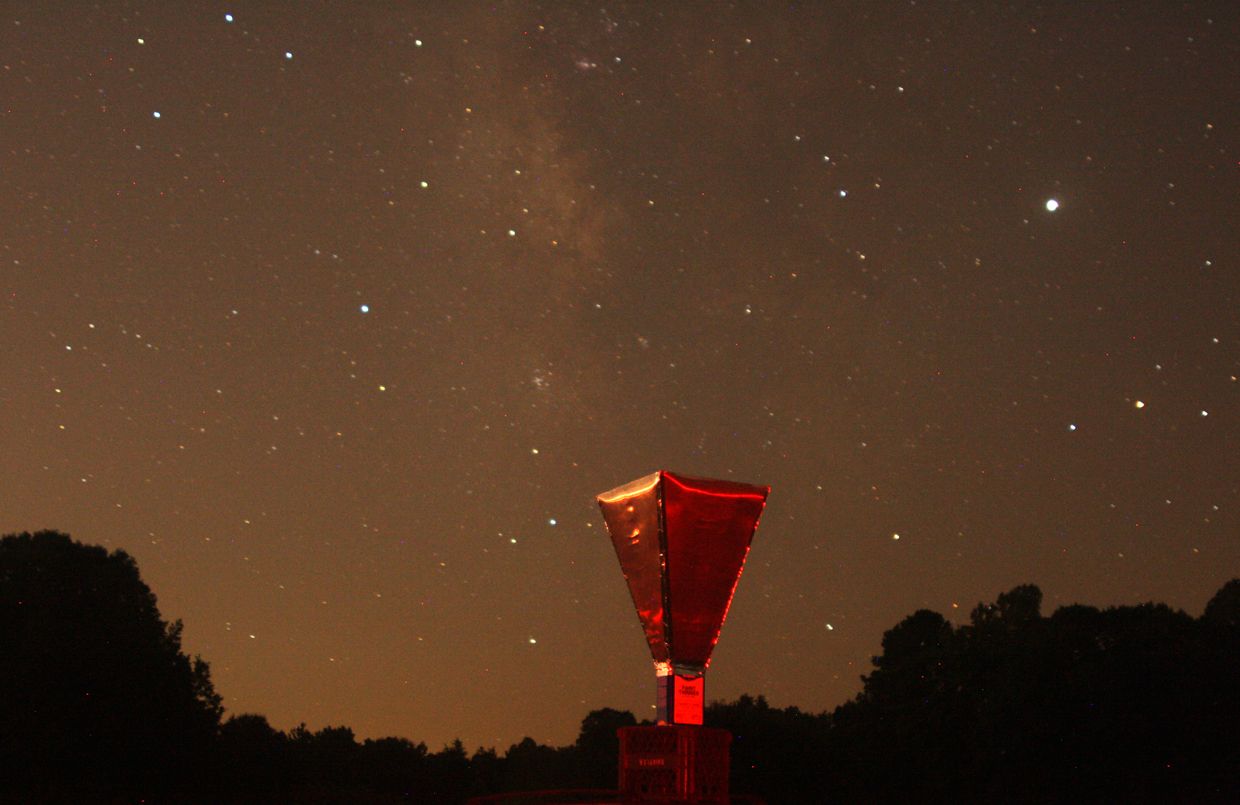
https://spectrum.ieee.org/geek-life...f-the-milky-way-with-this-diy-radio-telescopeA young friend recently spent a week learning about radio astronomy at the Green Bank Observatory in West Virginia. His experience prompted me to ask: How big a radio antenna would you need to observe anything interesting? It turns out the answer is a half meter across. For less than US$150 I built one that size, and it can easily detect the motions of the spiral arms of the Milky Way galaxy. Wow!
My quest began with a used satellite-TV dish and a “cantenna” waveguide made from a coffee can placed at the dish’s focus. Unfortunately, I had to abandon this simple approach when I figured out that a coffee can was too small to work for the wavelength I was most interested in: 21 centimeters. That is the wavelength of neutral hydrogen emissions, a favorite of radio astronomers because it can be used to map the location and motion of clouds of interstellar gas, such as those in the spiral arms of our galaxy.
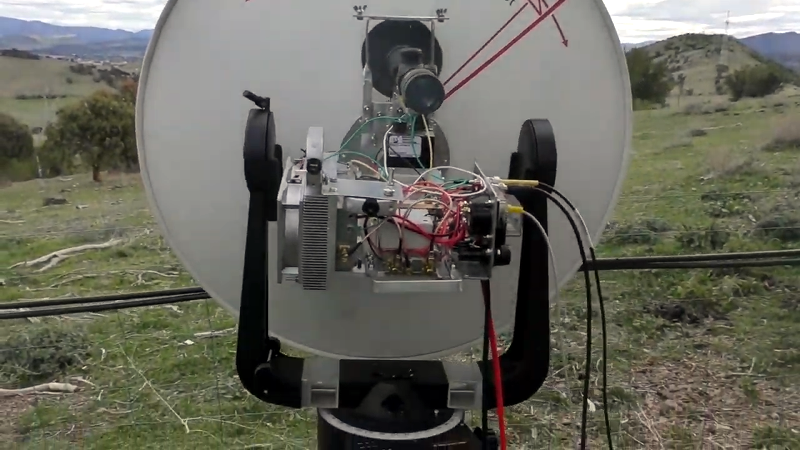
Bouncing Signals Off The Moon
One of the great things about ham radio is that isn’t just one hobby. Some people like to chit chat, some like to work foreign countries, some prepare for emergencies, and there are several s…
JHartikka
Luutnantti

Savo-Karjalan turvaviestintäverkko Pisara 2019 -harjoituksessa
Valtakunnallisessa Pisara-valmiusharjoituksessa lauantaina 26.10. toimi puhelin- ja nettiyhteyksistä riippumaton puheyhteys Savo-Karjalan turvaviestintäverkon (SK TUVI) välityksellä harjoitusasemille Joensuuhun, Tohmajärvelle ja Outokumpuun, sekä vapeparadioharrastajille Polvijärvelle, Juukaan ja Lieksaan.
Tässä harjoituksessa käytettiin S-K turvaviestintäverkon kolmea langattomasti keskenään yhteydessä olevaa vapepatoistinta, jotka sijaitsevat Kolilla, Outokummussa ja Leppävirralla. Vapepatoistimet yhdistävät ja välittävät yhteyksiä tavallisimpien kansanradiopuhelinten kesken, kuten SPR:n, vapepan ja metsästäjien RHA68- sekä vapepa 165 -radiot.
Vapepatoistinverkon mobiiliyhteydet kattavat nyt Pohjois-Karjalan pohjois- ja keskiosat, Keski-Savon, sekä osan Pohjois-Savoa. Koska luonnonmullistukset eivät ilmoita ennakkoon aikaansa eivätkä paikkaansa, turvaviestintäverkko on tehty helposti laajennettavaksi pysyvillä sekä tilapäisillä toistimilla kattamaan yhteyksiä viestitukea kaipaaville alueille.
Radioiden ja puhelinten 'sekakäyttö'
Turvatoistinverkkoon on yhteys myös kännyköiden kautta Zello Walkie Talkie -sovelluksen avulla, jolloin se yhdistää radiopuhelinten ja kännyköiden käyttäjiä.
Turvatoistimet ovat aliääniltään ja taajuuksiltaan yhteensopivia pataljoonaradioiden kanssa niin, että ne soveltuvat viestitueksi vapaaehtoisten ja puolustusvoimien yhteisoperaatioissa, kuten metsäpalojen sammutuksessa tai suuretsinnöissä.
Nämä vapepatoistimet ovat kaikkien valmiusyhteyksistä kiinnostuneiden kansalaisten käytettävissä mm. kyläturvayhteyksiin myrskyjen, tykkylumen tai sähkökatkojen rampauttaessa tavanomaiset sähköiset viestiyhteydet.
Ylläpito vapaaehtoisvoimin
Vapepatoistinverkko on osa hanketta "Kansalaisten välttämättömimpien viestiyhteyksien varmistaminen". Muita hankkeessa rakennettuja kriisi- ja turvaviestintätoistinverkkoja ovat radioamatööritaajuuksilla maakuntia yhdistävät Kolin ja Keski-Savon puhetoistimet OH7RAC ja OH7RAD, sekä tekstisanomia ja paikkatietoa välittävä pakettiradioverkko, joka on osa maailmanlaajuista radioamatöörien G8BPQ-digimodeverkkoa.
Turvatoistinverkko on toteutettu pelastuspalveluaktiivien, radioharrastajien ja reserviläisten talkootyönä pääasiassa lahjoituksin saaduin radiolaittein ja antennein. S-K turvatoistinverkon ylläpitäjänä on valtakunnallisesti toimiva Suomen Radioturvayhdistys (SRT).
Radioyhteyksien ohella valtakunnallisella zellokanavalla 'vapepa-chat' pidettiin netin kautta puheyhteyttä ainakin Itä-Suomen ja Oulun harjoituksen välillä. Kuulumisia: "Myös Oulussa ollaan Pisara-harjoituksessa. Telttaa pystyttävät siellä kovassa tuulessa."
T: - Juha
Ymmärtääkseni verkko on laajentunut/laajentumassa sisämaan suuntaan?Katso liite: 34027
Savo-Karjalan turvaviestintäverkko Pisara 2019 -harjoituksessa
Valtakunnallisessa Pisara-valmiusharjoituksessa lauantaina 26.10. toimi puhelin- ja nettiyhteyksistä riippumaton puheyhteys Savo-Karjalan turvaviestintäverkon (SK TUVI) välityksellä harjoitusasemille Joensuuhun, Tohmajärvelle ja Outokumpuun, sekä vapeparadioharrastajille Polvijärvelle, Juukaan ja Lieksaan.
Tässä harjoituksessa käytettiin S-K turvaviestintäverkon kolmea langattomasti keskenään yhteydessä olevaa vapepatoistinta, jotka sijaitsevat Kolilla, Outokummussa ja Leppävirralla. Vapepatoistimet yhdistävät ja välittävät yhteyksiä tavallisimpien kansanradiopuhelinten kesken, kuten SPR:n, vapepan ja metsästäjien RHA68- sekä vapepa 165 -radiot.
Vapepatoistinverkon mobiiliyhteydet kattavat nyt Pohjois-Karjalan pohjois- ja keskiosat, Keski-Savon, sekä osan Pohjois-Savoa. Koska luonnonmullistukset eivät ilmoita ennakkoon aikaansa eivätkä paikkaansa, turvaviestintäverkko on tehty helposti laajennettavaksi pysyvillä sekä tilapäisillä toistimilla kattamaan yhteyksiä viestitukea kaipaaville alueille.
Radioiden ja puhelinten 'sekakäyttö'
Turvatoistinverkkoon on yhteys myös kännyköiden kautta Zello Walkie Talkie -sovelluksen avulla, jolloin se yhdistää radiopuhelinten ja kännyköiden käyttäjiä.
Turvatoistimet ovat aliääniltään ja taajuuksiltaan yhteensopivia pataljoonaradioiden kanssa niin, että ne soveltuvat viestitueksi vapaaehtoisten ja puolustusvoimien yhteisoperaatioissa, kuten metsäpalojen sammutuksessa tai suuretsinnöissä.
Nämä vapepatoistimet ovat kaikkien valmiusyhteyksistä kiinnostuneiden kansalaisten käytettävissä mm. kyläturvayhteyksiin myrskyjen, tykkylumen tai sähkökatkojen rampauttaessa tavanomaiset sähköiset viestiyhteydet.
Ylläpito vapaaehtoisvoimin
Vapepatoistinverkko on osa hanketta "Kansalaisten välttämättömimpien viestiyhteyksien varmistaminen". Muita hankkeessa rakennettuja kriisi- ja turvaviestintätoistinverkkoja ovat radioamatööritaajuuksilla maakuntia yhdistävät Kolin ja Keski-Savon puhetoistimet OH7RAC ja OH7RAD, sekä tekstisanomia ja paikkatietoa välittävä pakettiradioverkko, joka on osa maailmanlaajuista radioamatöörien G8BPQ-digimodeverkkoa.
Turvatoistinverkko on toteutettu pelastuspalveluaktiivien, radioharrastajien ja reserviläisten talkootyönä pääasiassa lahjoituksin saaduin radiolaittein ja antennein. S-K turvatoistinverkon ylläpitäjänä on valtakunnallisesti toimiva Suomen Radioturvayhdistys (SRT).
Radioyhteyksien ohella valtakunnallisella zellokanavalla 'vapepa-chat' pidettiin netin kautta puheyhteyttä ainakin Itä-Suomen ja Oulun harjoituksen välillä. Kuulumisia: "Myös Oulussa ollaan Pisara-harjoituksessa. Telttaa pystyttävät siellä kovassa tuulessa."
T: - Juha
JHartikka
Luutnantti
Ymmärtääkseni verkko on laajentunut/laajentumassa sisämaan suuntaan?
Aina kun innostuneita turvaverkkojen rakentajia ilmaantuu, niin mukaan toivotetaan tervetulleeksi!
Tuviverkkojen toteutustapaa ei ole määrätty, eikä käyttäjäryhmiä rajattu.
Kukin siis omalle kotiseudulleen ja osaamiselleen soveltuvin viestiyhteysratkaisuin.
Luovutin eräälle porukalle asennusmateriaaleja uuteen mastoon muutama viikko sitten..tuli puheeksiAina kun innostuneita turvaverkkojen rakentajia ilmaantuu, niin mukaan toivotetaan tervetulleeksi!
Tuviverkkojen toteutustapaa ei ole määrätty, eikä käyttäjäryhmiä rajattu.
Kukin siis omalle kotiseudulleen ja osaamiselleen soveltuvin viestiyhteysratkaisuin.
https://yle.fi/uutiset/3-11144170Hankasalmen Murtoisten vanhan kyläkoulun edustalla nököttävän rakennuksen paljastaa observatorioksi vain katolla oleva iso valkoinen kupu.
Vaatimattomasta ulkokuoresta huolimatta tähtiharrastajat ovat tehneet tässä rakennuksessa kansainvälistä havaintotoimintaa jo 15 vuoden ajan.
Nyt observatorioon on rakennettu myös maailman ainoa revontulien kuunteluasema.
Valoilmiönä revontulten syntymekanismit (siirryt toiseen palveluun) (Ursa) tunnetaan jo varsin hyvin, mutta niiden äänet ovat mysteeri.
Moni sanoo kuullensa revontulien ääntä, mutta todisteita on todella vähän, kertoo tähtiharrastajien yhdistyksen Jyväskylän Siriuksen puheenjohtaja Arto Oksanen.
– Ilmiöstä tarvitaan useampia rippumattomia havaintoja, että se saa todellisen tieteellisen vahvistuksen.
Tällainen revontulia kuunteleva automaattinen laitteisto on ainutlaatuinen maailmassa.
Observatorion katolle asennettu radioantenni mittaa kipinöiden aiheuttamaa sähköpurkausta ja neljä mikrofonia kuuntelevat taivasta.
Jyväskylän Siriuksen tähtitieteen harrastajat voivat tehdä havaintonsa kotikoneiltaan, sillä kaikki laitteet ovat etäkäytettäviä.
Viime syksynä Hankasalmen observatorio sai myös uuden kameran. Peiliteleskooppiin kiinnitetyllä CCD-kameralla on jo ehditty kuvata muuttuvia tähtiä, kuuta, planetaarisia sumuja, galakseja ja löydetty yksi novapurkaus.
Edellisenä yönä yksi Siriuksen jäsenistä on napannut laitteistolla kuvan kierteisestä galaksista. Kuvaaja otti yhteyden Hankasalmella olevaan laitteistoon lomamatkaltaan Floridasta.
Next time you get a new device and excitedly unwrap its little poly-wrapped power supply, remember this: for every switch-mode power supply you plug in, an amateur radio operator sheds a tear. A noisy, broadband, harmonic-laden tear.
The degree to which this fact disturbs you very much depends upon which side of the mic you’re on, but radio-frequency interference, or RFI, is something we should all at least be aware of. [Josh (KI6NAZ)] is keenly aware of RFI in his ham shack, but rather than curse the ever-rising noise floor he’s come up with some helpful tips for hunting down and eliminating it – or at least reducing its impact.
Attacking the problem begins with locating the sources of RFI, for which [Josh] used the classic “one-circuit-at-a-time” approach – kill every breaker in the panel and monitor the noise floor while flipping each breaker back on. This should at least give you a rough idea of where the offending devices are in your house. From there, [Josh] used a small shortwave receiver to locate problem areas, like the refrigerator, the clothes dryer, and his shack PC. The family flat-screen TV proved to be quite noisy too. Remediation techniques include wrapping every power cord and cable around toroids or clamping ferrite cores around them, both on the offending devices and in the shack. He even went so far as to add a line filter to the dryer to clamp down on its unwanted interference.
Judging by his waterfall displays, [Josh]’s efforts paid off, bringing his noise floor down from S5 to S1 or so. It’s too bad he had to take matters into his own hands – it’s not like the FCC and other spectrum watchdogs don’t know there’s a problem, after all.
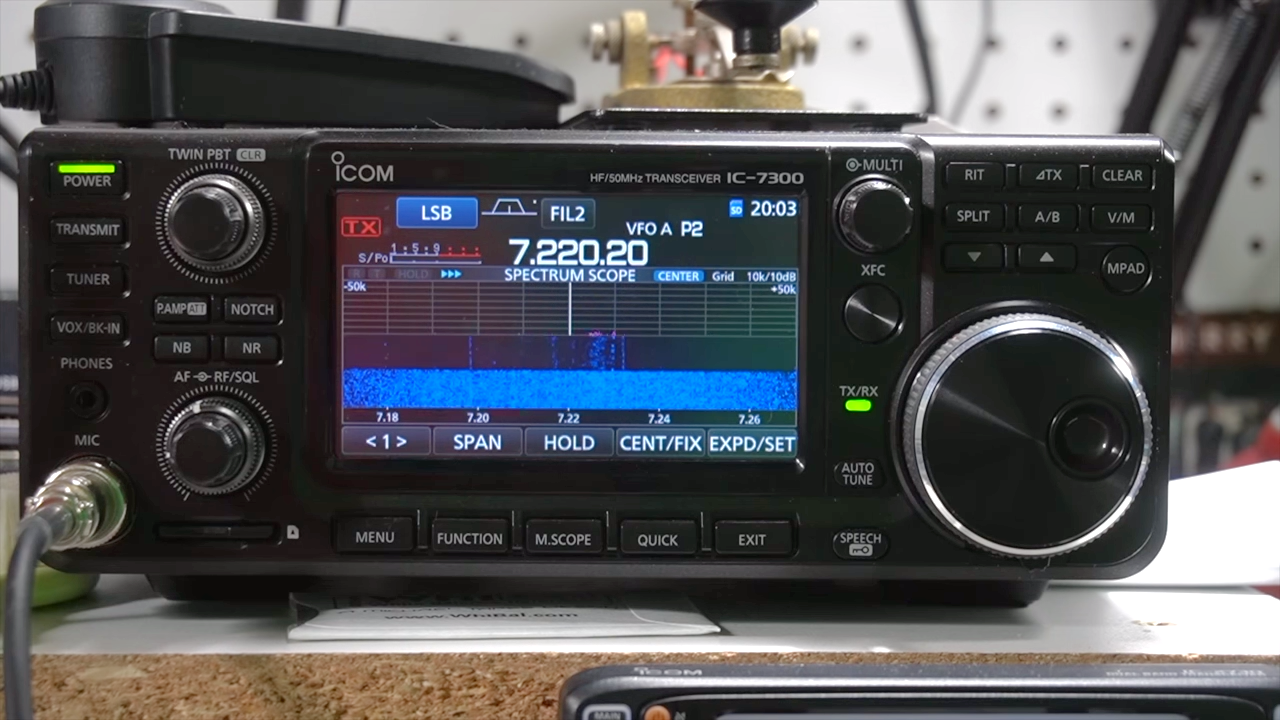
The RFI Hunter: Looking For Noise In All The Wrong Places
Next time you get a new device and excitedly unwrap its little poly-wrapped power supply, remember this: for every switch-mode power supply you plug in, an amateur radio operator sheds a tear. A no…
Dealing with an antenna is one of those topics we never feel like we know enough about. MIT had a live stream of [Dr. Kiersten Kerby-Patel] discussing antennas in a talk, sponsored by the ham radio club on campus. You can see the recording above.
The main assertion of the presentation is that everything is a dipole unless it is a loop. Although the professor probably deals with antennas at an extremely high theoretical level, she did a great job of keeping it aimed at ham radio operators.
The talk is about an hour long, so it isn’t optimized for the YouTube generation. There’s some introductory material that looks as though it would have been in one of our old physics classes. However, the talk gets more practical towards the end.
There’s the obligatory mention of Yagis and loops. There’s even a Smith chart. If you don’t know what the Chu limit is, you should definitely be watching this video. The end of the talk covers some very small antennas using active devices or even moving parts.

Ham Antennas From MIT
Dealing with an antenna is one of those topics we never feel like we know enough about. MIT had a live stream of [Dr. Kiersten Kerby-Patel] discussing antennas in a talk, sponsored by the ham radio…
Terrestrial radio may be a dying medium, but there are still plenty of listeners out there. What would a commute to or from work be without a check of “Traffic on the Eights” to see if you need to alter your route, or an update of the scores from yesterday’s games? Getting that signal out to as many listeners as possible takes a lot of power, and this dangerous yet fascinating demo shows just how much power there is on some radio towers.
Coming to us by way of a reddit post, the short video clips show a crew working on a 15,000-Watt AM radio tower. They appear to be preparing to do tower maintenance, which means de-energizing the antenna. As the engineer explains, antennas for AM radio stations in the medium-wave band are generally the entire tower structure, as opposed to the towers for FM and TV stations, which generally just loft the antenna as high as possible above the landscape. The fun starts when the crew disconnects a jumper and an arc forms across the clamp and the antenna feed. The resulting ball of plasma acts like a speaker, letting us clearly hear the programming on the station. It’s like one of the plasma speakers we’ve seen before, albeit exceptionally more dangerous.
It’s an impressive display of the power coursing through broadcast towers, and a vivid reminder to not mess with them. Such warnings often go unheeded, sadly, with the young and foolish paying the price. There’s a reason they put fences up around radio towers, after all.
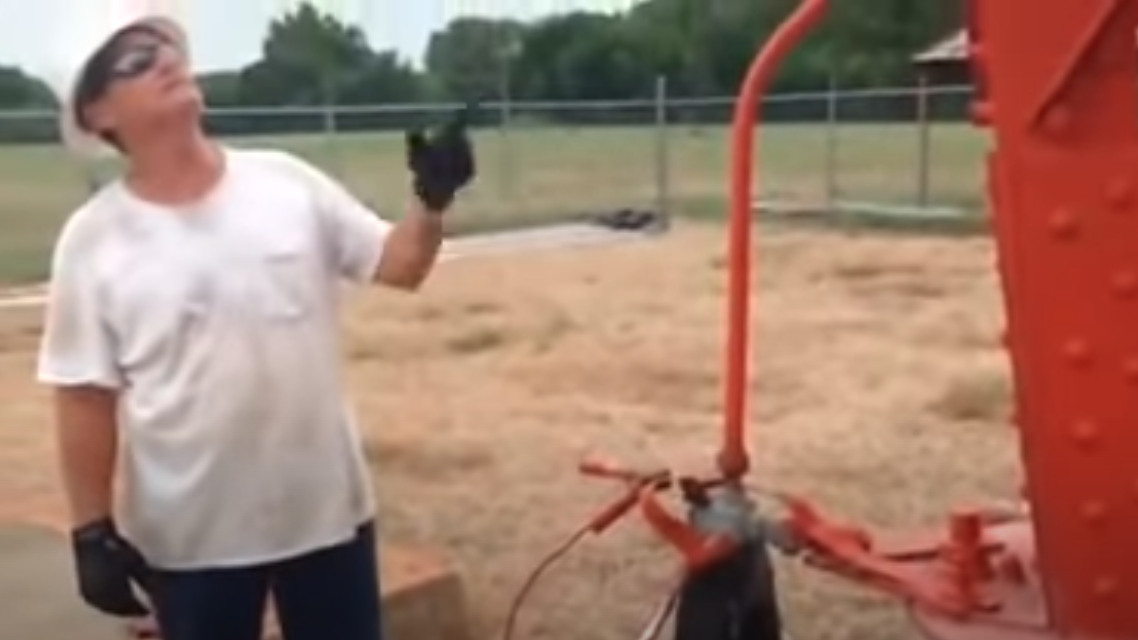
A Dangerous Demonstration Of The Power Of Radio
Terrestrial radio may be a dying medium, but there are still plenty of listeners out there. What would a commute to or from work be without a check of “Traffic on the Eights” to see if …
älkää kokeilko kotona vaikka onkin mielenkiintoinen esitys
Many of the SDR projects we see use a cheap USB dongle. They are great, but sometimes you want more and — especially — sometimes you want to transmit. The Analog Devices ADALM-Pluto SDR is easily available for $200 and sometimes as low as $100 and it both transmits and receives using an Analog AD9363 and a Zynq FPGA. Although you normally use the device to pipe IQ signals to a host computer, you can run SDR applications on the device itself. That requires you to dig into the Zynq tools, which is fun but a topic for another time. In this post, I’m going to show you how you can use GNU Radio to make a simple Morse code beacon in the 2m ham band.
I’ve had one on my bench for quite a while and I’ve played with it a bit. There are several ways to use it with GNU Radio and it seems to work very well. You have to hack it to get the frequency range down a bit. Sure, it might not be “to spec” once you broaden the frequency range, but it seems to work fine. Instead of working from 325 MHz to 3,800 MHz with a 20 MHz bandwidth, the hacked device transceives 70 MHz to 6,000 MHz with 56 MHz bandwidth. It is a simple hack you only have to do once. It tells the device that it has a slightly better chip onboard and our guess is the chips are the same but sorted by performance. So while the specs might be a little off, you probably won’t notice.
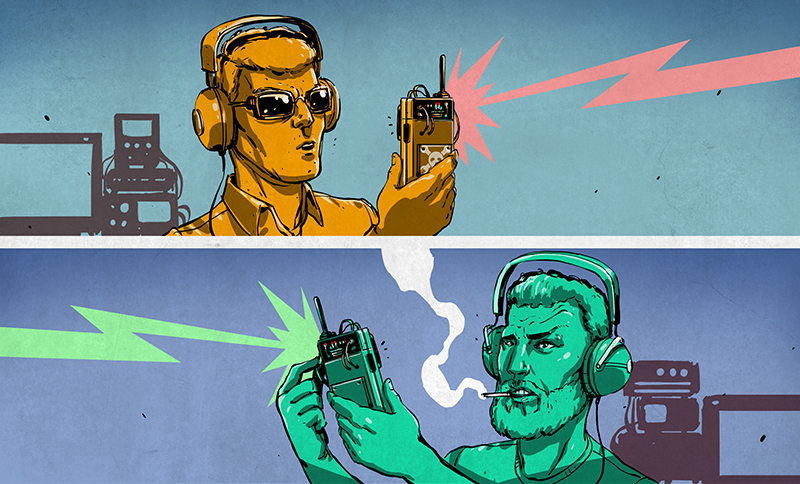
Pluto Might Not Be A Planet, But It Is An SDR Transceiver
Many of the SDR projects we see use a cheap USB dongle. They are great, but sometimes you want more and — especially — sometimes you want to transmit. The Analog Devices ADALM-Pluto SDR…
If you are looking for a fun project while you are cooped up and you have some spare coathangers, why not try this 4-element Yagi antenna (PDF)? [Pete N8PR] showed it off at his local ham radio club and it looked like something good for a lazy afternoon. If you aren’t a ham, you could adjust it all for a different VHF or UHF frequency.
For the boom, [Pete] mentions you can use wood, but it isn’t weather resistant. He chose half-inch PVC pipe. He also offers you a choice of material for the elements: #8 wire, welding rod, or — our favorite — coat hangers.
This is a big upgrade from a simple dipole or a vertical made from coax. The yagi should have about 8 dBi gain in the direction it is pointing. The center of the boom doesn’t have any elements, so that simplifies mounting. The insulating boom also makes mounting the driven element a breeze.
If you use the coat hangers, we’ve heard an easy way to get them very straight is to put one end on a vise and the other end in a drill chuck (see the video below). The method will weaken the wire, but the elements won’t have much stress. If it worries you, just go slow on the drill and you might consider annealing the wire with a torch afterward.
It would be easy to make this portable like some other designs we’ve seen. If you want the history and theory behind the venerable yagi antenna, you’ll want to revisit this post.
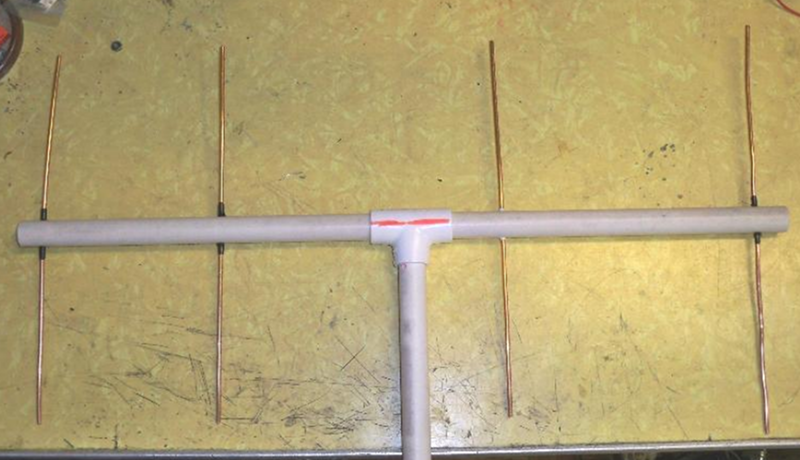
Beat Your Coat Hangers Into Antennas, Not Plowshares
If you are looking for a fun project while you are cooped up and you have some spare coathangers, why not try this 4-element Yagi antenna (PDF)? [Pete N8PR] showed it off at his local ham radio clu…
Laitan tämän myös tänne

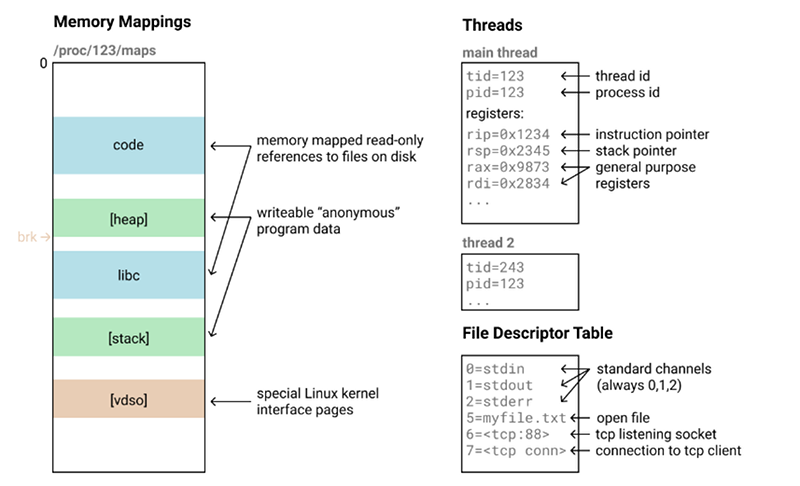
Beam Your Program To Another Computer
If you’ve programmed much in Linux or Unix, you’ve probably run into the fork system call. A call to fork causes your existing process — everything about it — to suddenly sp…
Teoriassa tämä pitäisi olla mahdollista softaradioiden kanssa. Ei pelkästään klusterissa olevien koneiden kanssa, mutta että teoriassa sä voisit kopsata datan ja asetukset, ja heittää ne toiseen koneeseen lennosta ilman suurempia säätämisiä. Ongelma tässä on tietoturvallisuus, miten autentikoida käyttäjä ja data keskenään, niin että töitä voi jatkaa missä vain?
Rural connectivity has always been a headache for service providers expanding their networks. Smaller and more spread out communities, by their nature, require more investment and infrastructure for fewer customers and smaller returns. Lighting up a street of apartment buildings in a major city can bring in dozens if not hundreds of new customers with just one fiber cable, for example, while miles of cable might be needed for each new customer in a sparsely populated area.
This problem is truer for many places in Africa, where a higher percentage of the population is rural. Connecting the people in those regions has been a tough task to date.
In an effort to change that, Clear Blue Technologies, a Canadian company developing off-grid power systems, will be working with South African provider MTN and others to roll out 500 new off-grid, no-maintenance 2G and 3G cell towers in Africa. The $3.5 million CAD contract is the first step in a 3- to 5-year program to expand cellular networks in a dozen countries in a way that’s suited to much of Africa’s large size and rural demographics.
“What’s unique about Africa,” says Miriam Tuerk, the CEO of Clear Blue, “is the pent-up demand.” People there have smartphones, but they don’t necessarily have the networks to use them to their full potential.
Full Page Reload
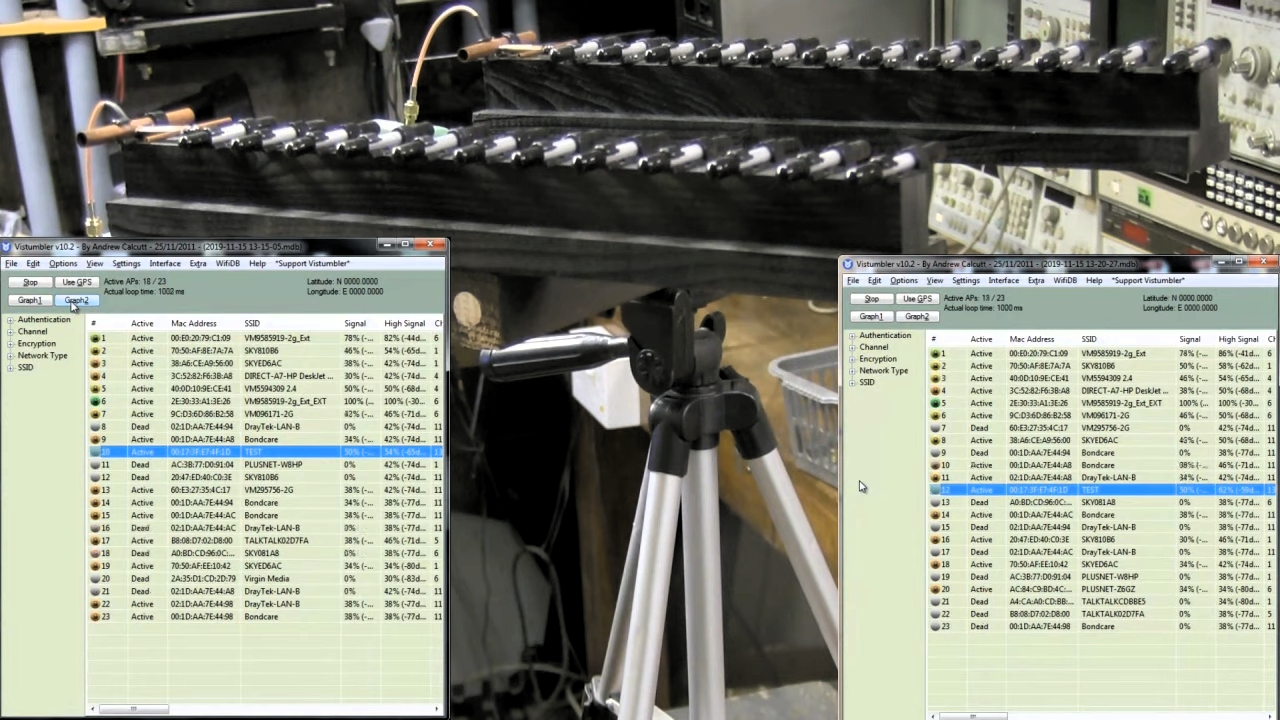
Lowering The Boom On Yagi Element Isolation
Antenna design can be confusing, to say the least. There’s so much black magic that goes into antennas that newbies often look at designs and are left wondering exactly how the thing could ev…
Onko mp.netin radioamatöörit kuunnelleet numeroasemia?
http://fi.wikipedia.org/wiki/Numeroasema
http://www.secmeter.com/numeroasemat.html
priyom.org (suojaamaton sivusto!)
Tuo on muuten hyvä sivu mikäli aihepiiri sattuu jotakuta kiinnostamaan. Esillä on niin aiemmin tallennettua materiaalia, kuin tulevien lähetysten aikataulujakin.
Sain tänä keväänä rakennettua HF-asemani 90% valmiiksi.
Xiegu G1M transceiverillä ja 5W lähetysteholla on saatu kusot mm. Italiaan, Espanjaan ja Aasian puoleiseen Veäjään PSK31:llä
CW:llä (Morse) on auennut Ranska ja Ruotsi
20/40M OCFD antenni on ripustettu talon vieressä kasvavaan Itsenäisyyden 70-vuotis kuuseen.
Puuttuu vielä virtalähde josta saisi onkaa vahvistimeen, viidellä watilla ei äänikusoja kannata yrittää.
Xiegu G1M transceiverillä ja 5W lähetysteholla on saatu kusot mm. Italiaan, Espanjaan ja Aasian puoleiseen Veäjään PSK31:llä
CW:llä (Morse) on auennut Ranska ja Ruotsi
20/40M OCFD antenni on ripustettu talon vieressä kasvavaan Itsenäisyyden 70-vuotis kuuseen.
Puuttuu vielä virtalähde josta saisi onkaa vahvistimeen, viidellä watilla ei äänikusoja kannata yrittää.
